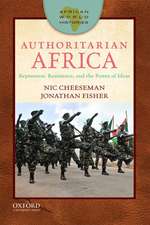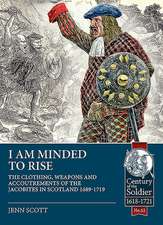Redcoats in the Classroom: From Musket to Maxim 1815-1914
Autor Howard R Clarkeen Limba Engleză Paperback – 13 ian 2021
This is the first published work on the Army's schools during the 19th century for almost 50 years and the author takes a fresh approach, placing the narrative within the context of contemporary opinion about the need for educated soldiers and the schooling appropriate for the lowers classes ( from which the Army predominately drew its recruits), whilst also explaining the hitherto neglected, but crucial part played by the responsible ministers at the War Office in establishing and ensuring the survival of the schools.
There were no published government reports on these regimental schools until 1859 and previous literature has been largely silent on the workings of the schools during the early years, when they were conducted by untrained schoolmaster-sergeants selected by their commanding officers from within the ranks of their regiments. This book breaks new ground by drawing on the archives of more than 40 regiments of infantry and cavalry preserved in their regimental museum and county records offices, including standing orders, digests of service and personal diaries, together with and other contemporary material from a larger number of regiments in the UK National Archives, in order to construct an unprecedented account of the workings of the schools during the years. The book explains the difficulties faced by COs in securing sufficient literate men from within the ranks suitable for appointment and explains the challenges faced by even the most competent schoolmasters in keeping open the schools as their regiments marched between barracks in the United Kingdom and set out on long journeys by land and sea to stations across the Empire.
The author builds on the previous literature in explaining the significance of the reforms in the Army's schools that were introduced during the 1840s, including establishing the 'Normal school' at the Royal Military Asylum Chelsea to train a new class of army schoolmasters to replace the schoolmaster- sergeants, and the appointment of an Inspector to oversee the work of the schools. The approach taken in this book however differs from the previous works in a number of respects. Whilst acknowledging the important part played by Rev George Gleig, the Army's Principal Chaplain and first Inspector of Military Schools, this book aims to provide a balanced narrative, which also recognizes the decisive part played of Sidney Herbert and Lord Panmure (Fox Maule) as the responsible ministers at the War Office. Their work in securing support within their governments for the additional expenditure required and in overcoming the suspicions and potential opposition of the Dukes of Wellington and Cambridge as Commanders in Chiefs at the Horse Guards were essential to the success of the reforms.
The author explains that the reforms were not always well received in all parts of the Army and argues that the changes introduced by the War Office in 1846 were only the start of a long process of creating a professional structure for the Army's schools that extended well into the 1860s. The chapters describing the difficulties faced by Sydney Herbert and Lord Palmore in implementing the reforms provide some interesting examples of the maneuvering for authority within the Army by the Secretary of State for War and the Commander in Chief at the Horse Guards during these years.
Throughout the century a large part of the British Army was stationed overseas and a significant proportion was in India. The previous literature has little to say about the how the reforms of were implemented in the colonial garrisons and is silent on the separate arrangements for superintendence and inspection of the schools that operated for some thirty years in the three Indian Presidencies of Bengal, Bombay and Madras. This work pays particular attention to the particular circumstances of the Army's school in India throughout the century.
The author explains that the introduction of short service enlistment following Cardwell's reforms in 1870 and the beginnings of national system of elementary education following Forster's Education Act in the same year, raised questions about the continuing need for a separate system of Army schools. This was the subject of intense debate within the military departments which is described in the book's concluding chapters. The War Office decided that there were good reasons to retain the Army's schools, but decided in 1887 that the tuition for recruits and enlisted men seeking promotion as NCOs could be more cost effectively delivered in larger garrison schools by combining soldiers from a number of regiments. It however decided to retain the regimental schools for the children for the practical reason that the battalions of the infantry and the regiments of cavalry continued to move at regular intervals between the camps and barracks at home and across the empire.
By the final decade of the century the schools had become an established part of the life of the regiments in British Army and contributed to the sense of regimental identity that was the essence of the British Army during the period. The schoolmasters and mistresses (both the trained and untrained) who taught in the regimental schools, often in the most difficult conditions, were amongst of the unsung pioneers of elementary education in Great Britain and their schools were exceptional and probably unique in providing not only for children, but also for adults, at a time when there was little continuing education for those who wished to improve their literacy after leaving school. The story of regimental and garrison schools has long deserved a place in t
Din seria From Musket to Maxim 1815-1914
-
 Preț: 312.94 lei
Preț: 312.94 lei - 5%
 Preț: 191.05 lei
Preț: 191.05 lei -
 Preț: 166.83 lei
Preț: 166.83 lei -
 Preț: 168.20 lei
Preț: 168.20 lei -
 Preț: 169.68 lei
Preț: 169.68 lei -
 Preț: 203.99 lei
Preț: 203.99 lei -
 Preț: 198.23 lei
Preț: 198.23 lei -
 Preț: 200.56 lei
Preț: 200.56 lei -
 Preț: 202.20 lei
Preț: 202.20 lei -
 Preț: 203.29 lei
Preț: 203.29 lei -
 Preț: 271.96 lei
Preț: 271.96 lei -
 Preț: 167.95 lei
Preț: 167.95 lei -
 Preț: 168.85 lei
Preț: 168.85 lei -
 Preț: 167.76 lei
Preț: 167.76 lei -
 Preț: 201.31 lei
Preț: 201.31 lei -
 Preț: 239.32 lei
Preț: 239.32 lei -
 Preț: 258.10 lei
Preț: 258.10 lei
Preț: 242.84 lei
Nou
Puncte Express: 364
Preț estimativ în valută:
46.47€ • 48.34$ • 38.37£
46.47€ • 48.34$ • 38.37£
Carte disponibilă
Livrare economică 24 martie-07 aprilie
Livrare express 07-13 martie pentru 50.29 lei
Preluare comenzi: 021 569.72.76
Specificații
ISBN-13: 9781912866472
ISBN-10: 1912866471
Pagini: 414
Dimensiuni: 155 x 234 x 23 mm
Greutate: 0.8 kg
Editura: HELION & COMPANY
Seria From Musket to Maxim 1815-1914
ISBN-10: 1912866471
Pagini: 414
Dimensiuni: 155 x 234 x 23 mm
Greutate: 0.8 kg
Editura: HELION & COMPANY
Seria From Musket to Maxim 1815-1914
Descriere
The author draws on a wealth of unpublished material to tell the story of the schools established by the government in every regiment of the British Army in 1812.
















